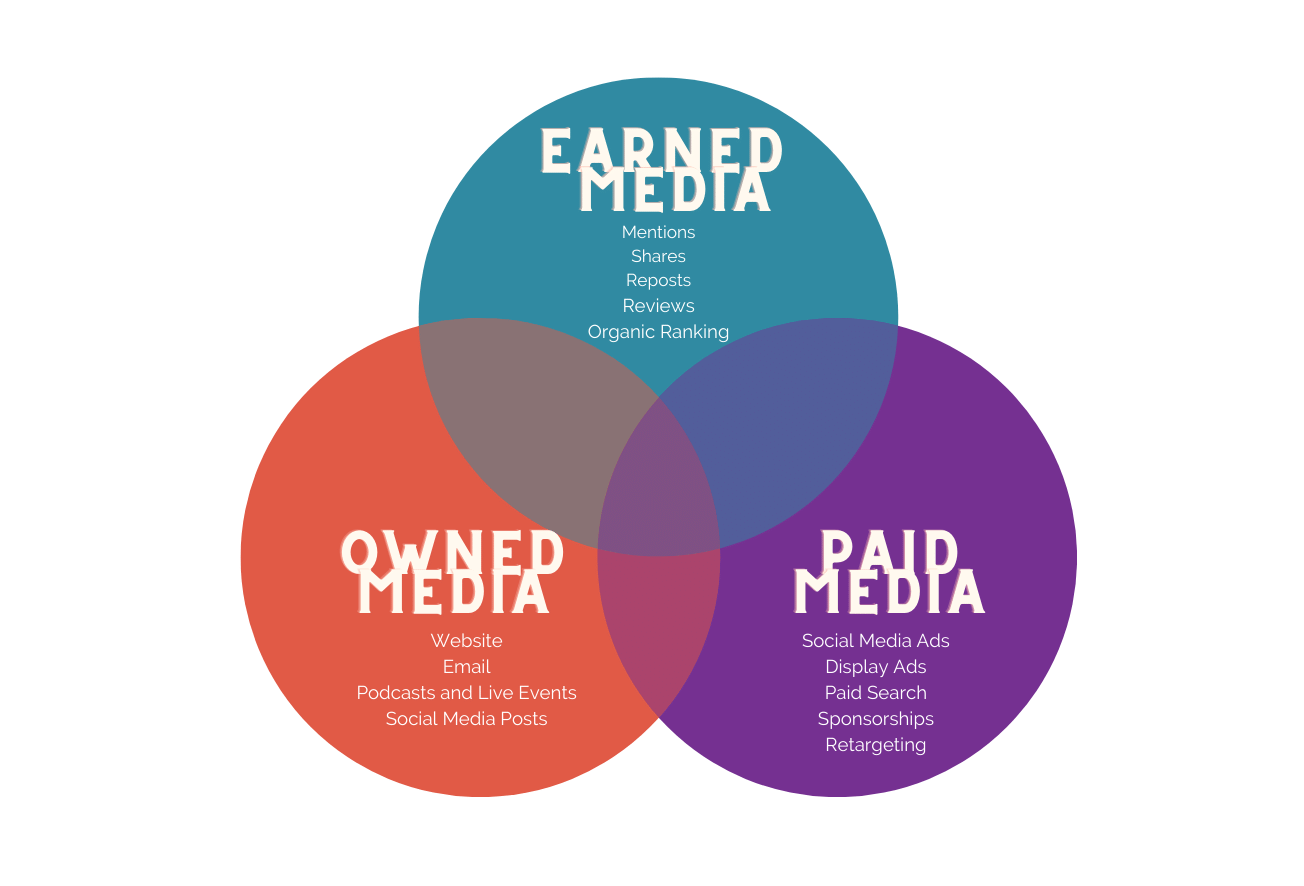As a content marketer, there are numerous channels and strategies at your disposal. One of the most critical aspects of using content marketing is managing your paid, owned, and earned media.
They actually all work together to drive traffic and conversions. Some come with a higher investment, and others have a more impactful ROI (return on investment).
In this post, we’ll break down each type of media, how to use them in content marketing, and which one provides the best ROI.
Quick Takeaways
- Paid, owned, and earned media are three parts of a digital marketing strategy.
- Each type of media has its place in the lead generation process.
- Owned media typically has greater ROI, but organizations will find the most success leveraging all three.
Next, we’ll look at each type of media.

What Is Paid Media?
Paid media consists of any type of advertising. It comes with a price tag, which varies depending on the channel. Unfortunately, this is what most people think marketing is all about.
The strategy behind paid ads is to drive users to your owned media. You can do this with:
- Paid search on Google or other search engines
- Social media ads
- Sponsorships of events (live or virtual)
- Partner emails
- Influencer marketing
- Digital display ads on third-party sites
- Sponsored content on third-party platforms that are credible to your buyers
- Retargeting
Benefits of Paid Media
- Immediate results as soon as the ad begins
- Fast lead generation and traffic to owned media
- You set the strategy. Even though you don’t own the channel, you decide what the ad looks like, says, and whom it will target.
Paid Media Stats and ROI
So, does paid media work? It certainly can with the right strategy. It’s important to note though, that paid media can only deliver ROI when the ad is running. When it’s over, it’s over.
Most content marketers use paid channels. The CMI 11th Annual B2B Content Marketing Report found that 72 percent do so.
What paid channels do they use? The leader was social media, followed by paid search. The top pick for paid social media was LinkedIn with Facebook and Twitter coming in second and third.
Paid media will provide your brand with exposure and help you reach audiences you couldn’t reach before. Ads do have some obstacles that impede ROI. Buyers are “ad blind” because of the constant inundation. Often, leads from paid channels aren’t quality leads; expect to get lots of spam, especially from paid search. Whether the lead is qualifiable or not, you’re still paying.
Paid media ROI is going to be different for any business. It depends on how competitive your industry is, as that will result in higher bids for keywords. Other factors include how compelling the ad is and how well you target. Targeting is available in multiple ways. For example, on LinkedIn and other social media sites, you can target by geography, industry, job title, or interests.
For display ads or sponsored content, you’ll get impressions and clicks. But those don’t really tell you ROI. You have to be able to attribute the event to an actual sale, which can be tricky.



